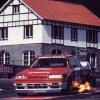Rb25Det 740Cc Injector Upgrade
Announcements
-
Similar Content
-
Latest Posts
-
By funkymonkey · Posted
Yeah, hard to find and a pain in the ass to change with the transverse engine. I’ve worked on a GTiR before and it’s not a job I’d ever want to do again. theres a company in South Africa that makes RS3 gearbox adaptors for the AWD SR20 including gearbox mounts, so I could modernise it and go a dual clutch with paddles. For now tho, it ticks all the boxes. Super cheap, can throw the kids and their junk in the back, and SR20 that I can turbo cheaply, a CVT that’s not a dog’s breakfast like the V35, and has 80% interchangeable parts with stuff I can source from the wreckers cheaply…. But it’s still unique. I love the wagon back of the Autech version. It’s cheap enough that I can buy another stock manual FWD Primera with SR20VE, swap the gearbox to the N15 pulsar short gear ratio box, swap out the brakes to the R32 ones I pulled off my 32, register it on club plates and take it racing. $1300 shipping from NZ. Heaps of parts and aftermarket builders for transverse SR20’s in NZ. -
By joshuaho96 · Posted
Hard to say, just pop the rocker covers off and have a look if you think it's cammed. You probably need to replace the valve cover gasket/half moons anyways. -
From my youth: GTi-R clutch change is a massive pain. The gearboxes are fragile? But the car is super cool and I want one 😢
-
By TurboTapin · Posted
Driveline vibration is resolved. I ended up loosening all my engine mount and trans mount bolts, giving it a good shake then retightening everything and it's gone... Let's just say I was surprised that fixed it. I've been happily driving it around again but unfortunately put zero time into my direct port/constant pressure WMI setup. I'm on vacation next week, so I'll try and finalize it then. On a different note, I spent all week fuel/ignition mapping 2x 216L V16 engines. Turbo's were burning glycol and we swapped them out for larger units. We also had planned emissions testing on site, so I figured I'd be there the same week to use their instrumentation and massage any emissions issues out if needed. This was a first for me. Fuel management is similar in certain ways to automotive (i.e air density as load variable) but very different in others. It's all PLC based and AFR's are controlled by air and not fuel. They use a control valve between the turbo and air manifold to control pressure which in turn controls AFR's. Due to this, target AFR tables supplied by the OEM are in pressures and not mass which really through me off. They use air pressure vs fuel pressure tables. I also relied on an O2 concentration sensor the emissions team had in the exhaust. Ignition timing was also all over the place and we were losing a fair bit of power. They're now happily sitting at 16-40BTDC depending on load. We were making about 1600kw at 900rpm at 90% load. Engines were running a lot smoother as well.
-







Recommended Posts
Create an account or sign in to comment
You need to be a member in order to leave a comment
Create an account
Sign up for a new account in our community. It's easy!
Register a new accountSign in
Already have an account? Sign in here.
Sign In Now